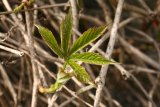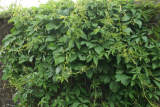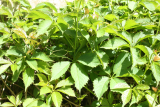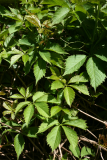Additional notes (click to expand)
Medicinal
Alterative; Astringent; Diuretic; Expectorant; Tonic.
Plants for a Future (2017) at www.plantsforafuture.org.uk. http://www.pfaf.org/user/Plant.aspx?LatinName=Parthenocissus+quinquefolia
link
Other use
Dye plant
Toxicity
Skin contact with the leaves in autumn can cause dermatitis in some people. Berries are of low toxicity but they do contain calcium oxalate crystals and may irritate the mouth and cause abdominal discomfort if ingested by humans and domestic pets.
Professor Anthony Dayan, 2022
"Humans/Pets: Harmful if eaten; skin irritant."-HTA guidelines
hta
Geographical distribution
- Northern America, Eastern Canada
- Northern America, Mexico
- Northern America, North-Central U.S.A.
- Northern America, Northeastern U.S.A.
- Northern America, South-Central U.S.A.
- Northern America, Southeastern U.S.A.
- Southern America, Central America, Guatemala
Parthenocissus quinquefolia (L.) Planch.
Family: VITACEAEGenus: Parthenocissus
Species: quinquefolia (L.) Planch.
Common names: Virginia Creeper; Woodbine
Distribution summary: Northern & Southern America
Habit: Climber
Hardiness: H5 - Hardy; cold winter
Habitat: Rocky slopes, scrub & light woodland
Garden status: Currently grown
Garden location: North America (A)
Flowering months: June, July, August
Reason for growing: Medicinal, other use, toxic
.JPG)

.JPG)


